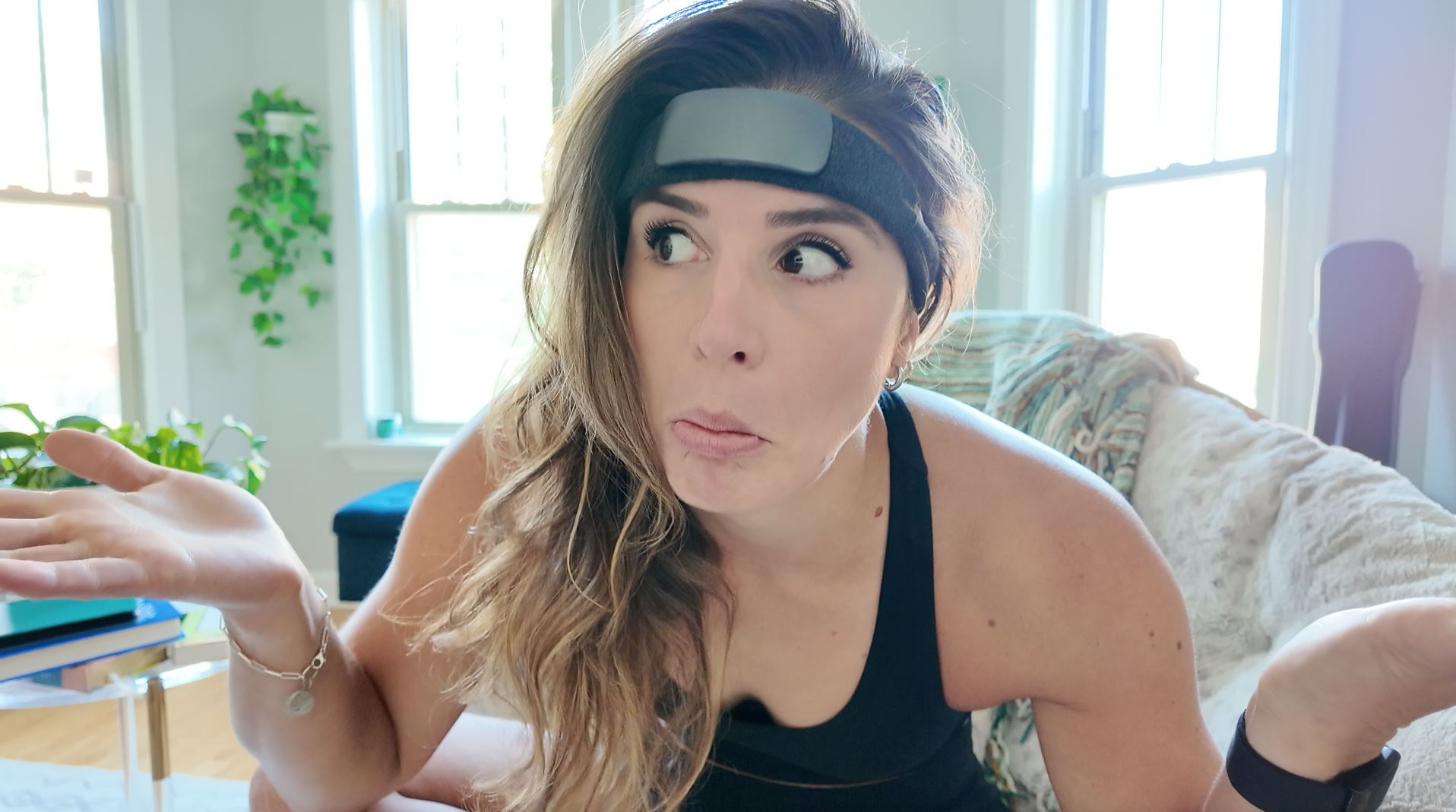I Tested the Muse S Athena Brain-Reading Headband for 30 Days — Here’s What Happened
This blog is based on a video from my YouTube channel. If you prefer to watch that, click here.
Can a Headband Really Train Your Brain?
If you’ve ever wished you could see what your mind was doing in real time — and train it to focus, recover, or sleep better — the Muse S Athena promises exactly that. I spent 30 days using it through work, workouts, and recovery to find out if it’s worth the hype or just another shiny wearable.
What Is the Muse S Athena?
Muse S Athena is a brain-sensing headband built to track mental performance using two scientific systems:
EEG (Brainwave Monitoring) — Sensors along your forehead and behind your ears pick up electrical activity. The paired Muse app translates that into feedback: when your mind is calm, the ambient sounds soften; when it drifts, they intensify. It’s real-time neurofeedback that teaches you to notice and correct distraction.
fNIRS (Near-Infrared Spectroscopy) — Small lights at the front measure oxygen levels in your prefrontal cortex. More oxygenated blood = more mental effort. Muse turns that into a “strength score,” showing how hard your brain is working.
Together, EEG + fNIRS paint a full picture of what state your brain is in and how much effort it takes to stay there — something no other consumer wearable currently does.
How It Works in Practice
After pairing the headband with the Muse app, you can choose from three main training modes:
Biofeedback Sessions: Meditations for mind, heart, body, or breath. The soundscape reacts to your mental state in real time, helping you build focused calm and lower stress. Each session ends with a “calm %,” stillness, heart, and breath score.
Eyes-Open Mental Strength Training: A mini-game where you make an owl fly using your concentration. When focus drops, the owl sinks — a surprisingly addictive way to build sustained attention before deep work or workouts.
Sleep Programs: Muse’s “Digital Sleeping Pills” fade audio as you fall asleep and gently reactivate if you wake up. Overnight EEG tracking provides light, deep, and REM data plus a “Brain Recharge Score.”
Focus, Flow & Visualization
As someone recovering from an ACL injury, I’m always looking for tools that bridge mental and physical performance. Muse’s breathwork and visualization sessions hit that sweet spot. Guided breathing synced with live brain feedback helps lower stress and sharpen concentration — perfect before big workouts or physical therapy.
The visualization content pairs well with Muse’s EEG readings: when your brain is in a calm, steady rhythm, you’re essentially practicing flow state on demand. For athletes, that’s the zone where recovery and performance intersect.
What I Liked
Real Data on Focus: Seeing calm and focus scores after each session kept me consistent — like gamifying mindfulness.
Performance Insights: fNIRS-based “strength” metrics showed when mental fatigue hit, a cue to rest or reset.
Breathwork Feedback: Watching heart rate drop as I practiced controlled breathing made recovery tangible.
Comprehensive Metrics: Alpha Peak and Brain Recharge scores reveal trends in cognitive recovery over time.
Comfort and Build: Soft, breathable fabric and improved Bluetooth make it easy to wear for short sessions.
What Could Be Better
Finicky Fit: Hair or makeup can interfere with sensor contact, and setup takes patience.
Sleep Comfort: Side-sleepers will struggle — it’s best for back-sleepers or those using the pre-sleep programs instead of wearing it overnight.
Price Point: $575 plus a $99 yearly subscription is steep if you won’t use it consistently.
How It Compares to Other Wearables
Most devices like WHOOP or Oura Ring track body metrics — heart rate, strain, sleep stages. Muse Athena fills the missing half: the mental side of recovery. Think of WHOOP as telling you when to rest, and Muse helping you actually relax and recover through neurofeedback. Used together, they offer a 360-degree view of performance.
Who It’s For
Muse S Athena suits:
Athletes rebuilding from injury or chasing marginal gains in focus.
High-stress professionals who need structured mindfulness.
Biohackers obsessed with data-driven recovery.
Skip it if you tend to abandon new gadgets quickly — the benefits come with regular practice.
Final Verdict
After 30 days, Muse S Athena impressed me more than I expected. It’s not magic, but it transforms meditation and recovery into measurable, interactive training. While sleep tracking comfort could improve, its focus and breathwork tools genuinely helped me calm my mind and recover faster.
If you’re serious about optimizing mental performance, sleep quality, or injury recovery, this headband is worth exploring — especially with Muse’s 30-day return policy.
💸 Use code VICTORIADORSANO for a discount
Would you wear a brain-reading headband? Drop your thoughts below — are neurofeedback wearables the future of recovery or just too futuristic for now?


